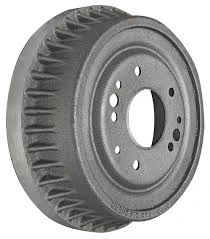
-
 Afrikaans
Afrikaans -
 Albanian
Albanian -
 Amharic
Amharic -
 Arabic
Arabic -
 Armenian
Armenian -
 Azerbaijani
Azerbaijani -
 Basque
Basque -
 Belarusian
Belarusian -
 Bengali
Bengali -
 Bosnian
Bosnian -
 Bulgarian
Bulgarian -
 Catalan
Catalan -
 Cebuano
Cebuano -
 Corsican
Corsican -
 Croatian
Croatian -
 Czech
Czech -
 Danish
Danish -
 Dutch
Dutch -
 English
English -
 Esperanto
Esperanto -
 Estonian
Estonian -
 Finnish
Finnish -
 French
French -
 Frisian
Frisian -
 Galician
Galician -
 Georgian
Georgian -
 German
German -
 Greek
Greek -
 Gujarati
Gujarati -
 Haitian Creole
Haitian Creole -
 hausa
hausa -
 hawaiian
hawaiian -
 Hebrew
Hebrew -
 Hindi
Hindi -
 Miao
Miao -
 Hungarian
Hungarian -
 Icelandic
Icelandic -
 igbo
igbo -
 Indonesian
Indonesian -
 irish
irish -
 Italian
Italian -
 Japanese
Japanese -
 Javanese
Javanese -
 Kannada
Kannada -
 kazakh
kazakh -
 Khmer
Khmer -
 Rwandese
Rwandese -
 Korean
Korean -
 Kurdish
Kurdish -
 Kyrgyz
Kyrgyz -
 Lao
Lao -
 Latin
Latin -
 Latvian
Latvian -
 Lithuanian
Lithuanian -
 Luxembourgish
Luxembourgish -
 Macedonian
Macedonian -
 Malgashi
Malgashi -
 Malay
Malay -
 Malayalam
Malayalam -
 Maltese
Maltese -
 Maori
Maori -
 Marathi
Marathi -
 Mongolian
Mongolian -
 Myanmar
Myanmar -
 Nepali
Nepali -
 Norwegian
Norwegian -
 Norwegian
Norwegian -
 Occitan
Occitan -
 Pashto
Pashto -
 Persian
Persian -
 Polish
Polish -
 Portuguese
Portuguese -
 Punjabi
Punjabi -
 Romanian
Romanian -
 Russian
Russian -
 Samoan
Samoan -
 Scottish Gaelic
Scottish Gaelic -
 Serbian
Serbian -
 Sesotho
Sesotho -
 Shona
Shona -
 Sindhi
Sindhi -
 Sinhala
Sinhala -
 Slovak
Slovak -
 Slovenian
Slovenian -
 Somali
Somali -
 Spanish
Spanish -
 Sundanese
Sundanese -
 Swahili
Swahili -
 Swedish
Swedish -
 Tagalog
Tagalog -
 Tajik
Tajik -
 Tamil
Tamil -
 Tatar
Tatar -
 Telugu
Telugu -
 Thai
Thai -
 Turkish
Turkish -
 Turkmen
Turkmen -
 Ukrainian
Ukrainian -
 Urdu
Urdu -
 Uighur
Uighur -
 Uzbek
Uzbek -
 Vietnamese
Vietnamese -
 Welsh
Welsh -
 Bantu
Bantu -
 Yiddish
Yiddish -
 Yoruba
Yoruba -
 Zulu
Zulu
cars that still use drum brakes
Cars That Still Use Drum Brakes An Overview
In today’s fast-paced automotive world, where technological advancements are consistently pushing the envelope of engineering, it's surprising to find that some vehicles still rely on drum brakes. While modern cars have largely transitioned to disc brakes for their enhanced performance and reliability, drum brakes continue to be used in various models, particularly in budget-friendly cars and certain applications.
Drum brakes have been around for a long time, first appearing in the early 20th century, and they have a proven track record. The mechanism comprises a cylindrical drum that rotates with the wheel. Inside the drum, brake shoes are pressed against the inner surface to create friction and slow down the vehicle. This design provides effective braking power, especially for less demanding automotive applications.
Cars That Still Use Drum Brakes An Overview
For example, several small cars from manufacturers like Toyota, Honda, and Hyundai still use drum brakes on their rear wheels. The Toyota Yaris and the Honda Fit, for instance, are designed for city driving, where the demands on the braking system are not as intense as on high-speed highways. In these contexts, drum brakes perform adequately, allowing manufacturers to offer competitive pricing while providing safety.
cars that still use drum brakes

Moreover, drum brakes can be advantageous in certain cases due to their ability to provide a more linear brake feel. In low-performance vehicles, this can result in smoother braking transitions, which is often appreciated by drivers of sedans and hatchbacks focused more on comfort than speed.
However, drum brakes are not without their drawbacks. They tend to dissipate heat less effectively than disc brakes, leading to a phenomenon known as brake fade during prolonged use, such as in hilly terrains or during frequent stop-and-go driving. Furthermore, they are heavier, which can affect overall vehicle performance and fuel efficiency.
In light of these considerations, many manufacturers are looking towards hybrid solutions. Some new vehicles utilize a combination of both drum and disc brakes, employing drum brakes in the rear for cost savings while equipping the front with more efficient disc brakes.
In conclusion, while the automotive industry continually strives for innovation and enhanced performance, the presence of drum brakes in certain vehicles reflects a blend of tradition, cost-effectiveness, and practicality. For budget-conscious buyers, these vehicles provide a reliable and economical choice, demonstrating that sometimes, age-old technology can still hold its ground in a rapidly evolving market.
-
What Are Drum BrakesNewsJul.07,2025
-
Understanding Brake Drum MaterialNewsJul.07,2025
-
Semi-Trailer Brake Drum: A Key Component for Extreme Loads and Long-Distance TransportNewsJul.07,2025
-
Drum Brake Pads for SaleNewsJul.07,2025
-
Brake Drums for SaleNewsJul.07,2025
-
Brake Drum ManufacturerNewsJul.07,2025
-
Aluminum Brake Drums: The Future of High-Performance CarsNewsJul.07,2025
